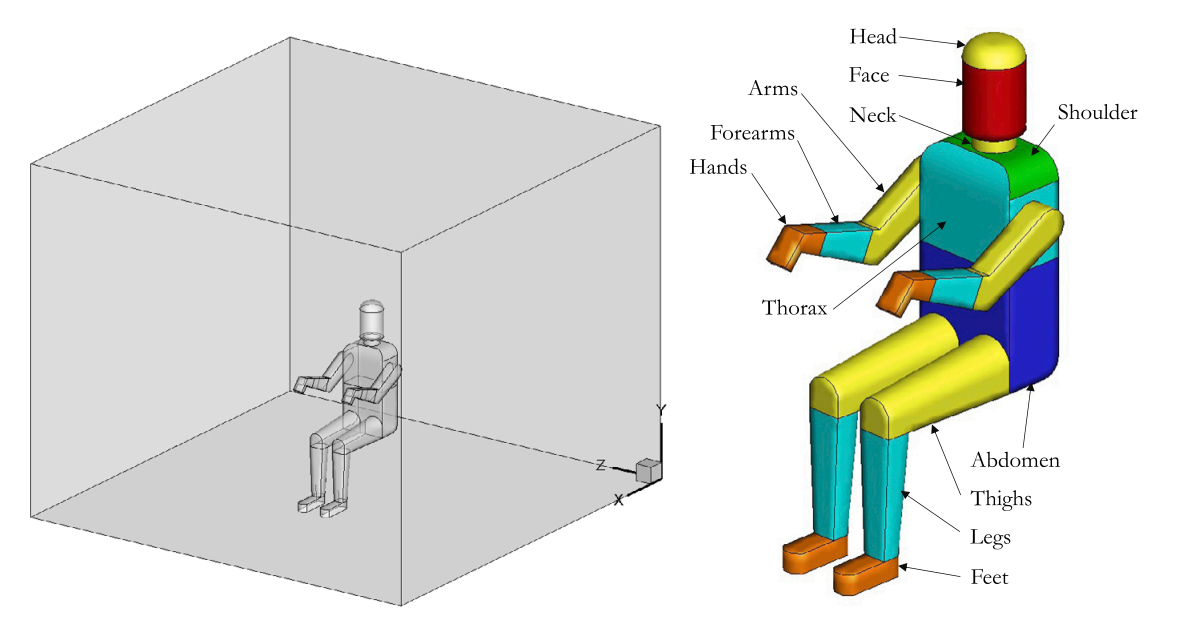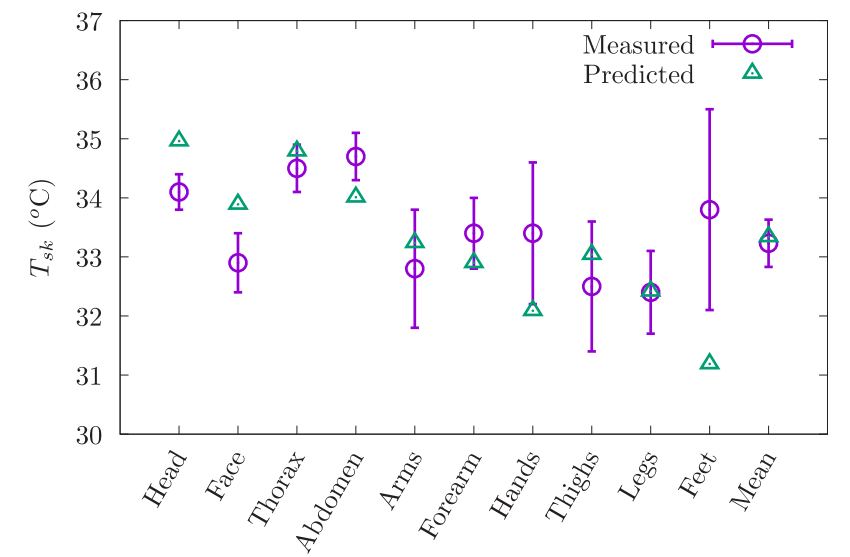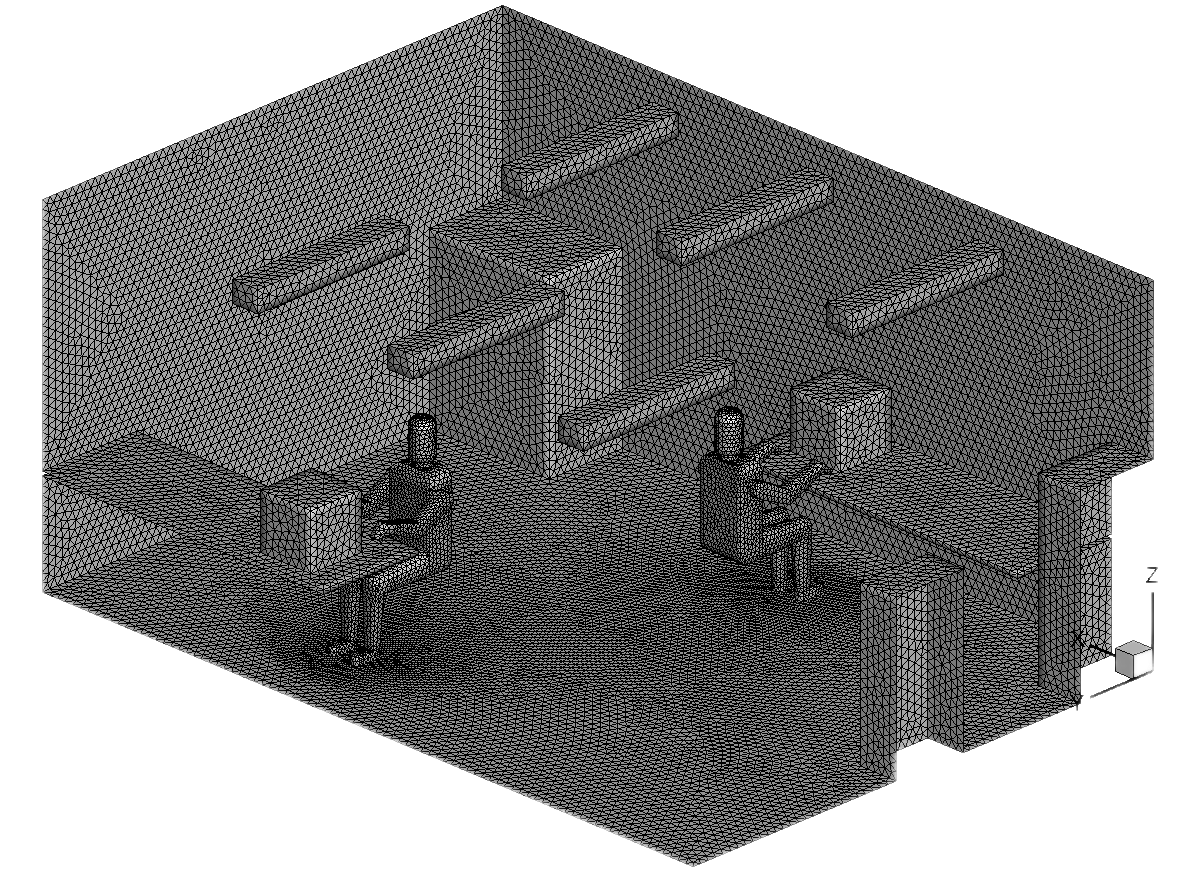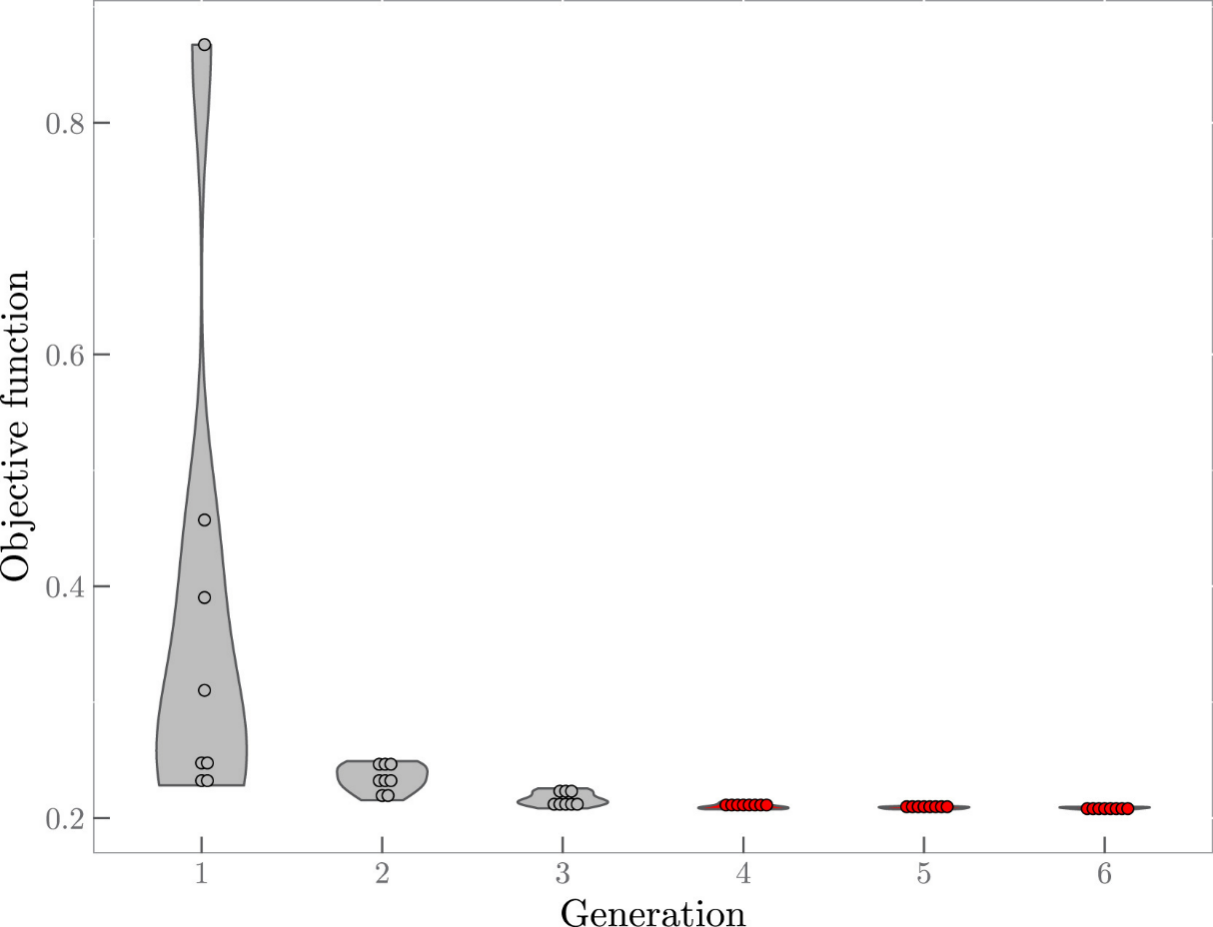学术快讯| 耦合计算流体力学和人体多节点体温调节模型的室内热环境逆向设计研究
近日,上海交通大学设计学院建筑学系建筑技术团队副教授赖达祎以通讯作者身份,在高水平国际期刊《Building and Environment》(影响因子IF=7.093,JCR Q1)上发表了学术论文“Inverse design of a thermally comfortable indoor environment with a coupled CFD and multi-segment human thermoregulation model”。该论文基于计算流体力学和人体多节点体温调节模型的耦合,提出了逆向优化室内热环境的方法,并将该方法应用于某置换通风办公室的室内气流组织设计中。

论文摘要
舒适的室内热环境对于人员的身体健康和工作效率至关重要。在室内热环境设计中,基于计算流体力学(Computational fluid dynamics,CFD)的方法为了简化计算,通常假定人员表面温度为固定值,并使用预测平均投票(Predicted mean vote,PMV)来估计人体热舒适水平。假设表面温度为固定值将导致室内热环境预测不准确,而PMV会浪费CFD计算得到的丰富信息。因此,本研究开发并验证了CFD和人体多节点体温调节模型(Multi-node human thermoregulation model,HTM)的耦合方法。在耦合模型中,CFD和HTM在模拟期间同步数据,并可更新人员皮肤温度,最终得到的皮肤温度可用于量化室内热舒适水平。本文用文献中的测量数据验证了该耦合模型预测局部皮肤温度的准确性。随后,本研究进一步将该耦合模型与遗传算法结合,用于逆向设计,并在有两个办公人员的置换通风的办公室中展示了逆向设计的过程。结果表明,利用CFD-HTM耦合模型,遗传算法能够获得最优送风条件,该条件使得人体局部皮肤温度最接近中性温度。本研究开发的CFD-HTM耦合方案可以高效设计室内环境,提高室内环境热舒适性。
关键词:热舒适,压力修正法,遗传算法,优化设计,OpenFOAM
Abstract
A thermally comfortable indoor environment is critical for ensuring the health and productivity of the occupants. To design a thermally comfortable environment, CFD-based methods assume the occupants’ surface temperature to be fixed values for simplicity and use PMV to estimate thermal comfort level. The constant surface temperature assumption would lead to inaccurate prediction of the indoor environment and the use of PMV would lead to a waste of the rich spatial information calculated by CFD. Therefore, this study developed and validated a coupled CFD and multi-node human thermoregulation model (HTM). The CFD and HTM synchronize data during the simulation and the occupant skin temperature could be updated. The final skin temperature could be used to quantify the thermal comfort level. The accuracy of the coupled model in predicting the skin temperature was validated by experimental data from literature. The coupled model was further integrated with genetic algorithm for inverse design. The inverse design of thermal environment in an office with two occupants and displacement ventilation was used for demonstration. With the CFD-HTM model, genetic algorithm was able to identify an optimal condition that leads to the least deviation of skin temperature of local body parts from the neutral values. The developed CFD-HTM coupling scheme can be used to effectively design indoor environment with improved thermal comfort.
Keywords: thermal comfort, pressure-correction scheme, genetic algorithm, optimal design, OpenFOAM


耦合CFD-HTM进行逆向设计的流程图


人体多节点体温调节模型验证案例和验证结果

办公室置换通风案例和网格

以皮肤温度为设计目标时目标函数随遗传代数的变化

最优送风条件下的室内流场和温度场

最优送风条件下的皮肤温度分布
本论文第一作者为瑞典皇家理工学院土木与建筑工程系刘炜副教授,合作作者为天津大学环境科学与工程学院张腾飞教授,上海交通大学设计学院建筑系赖达祎副教授为通讯作者。